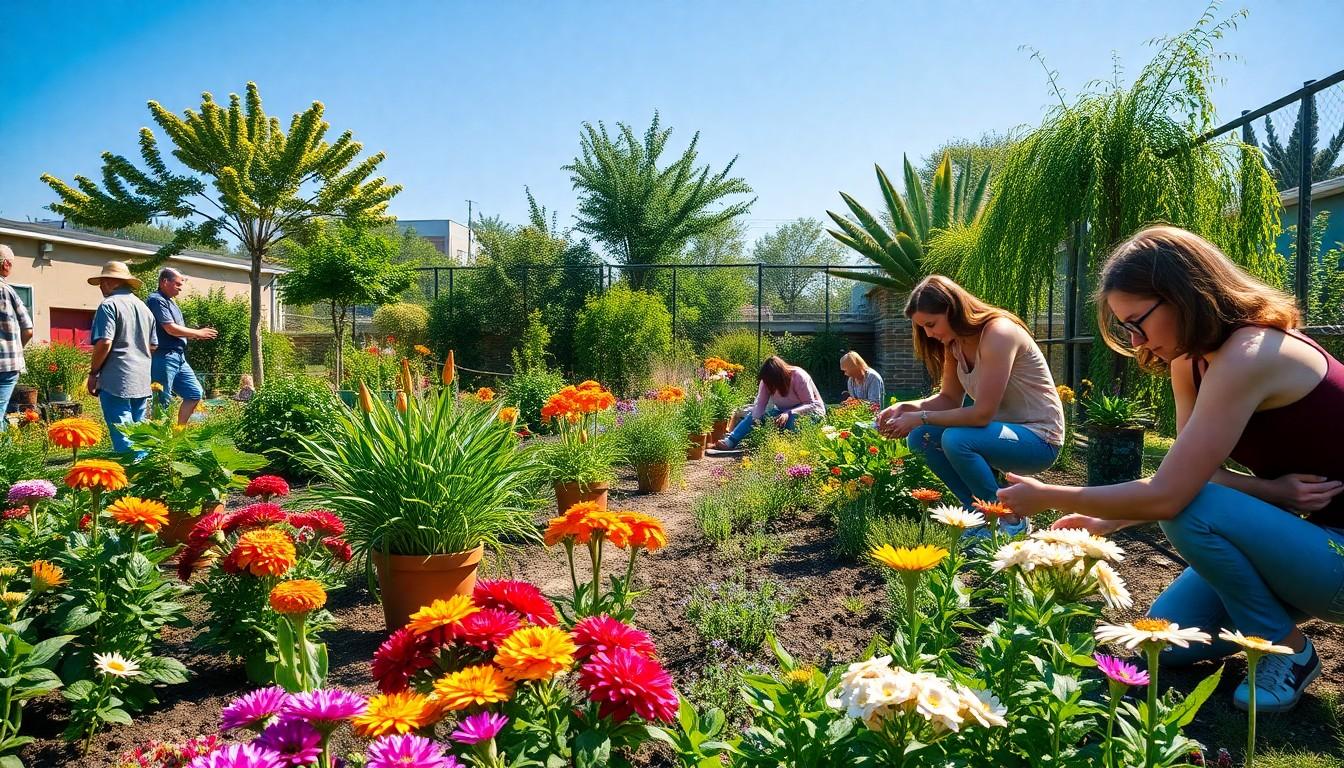In a world where plastic seems to multiply faster than rabbits, sustainable living has become the superhero we didn’t know we needed. Imagine a lifestyle that not only saves the planet but also saves your wallet—sounds like a win-win, right? Enter the sustainable living vector, a powerful concept that can transform everyday choices into eco-friendly habits.
Sustainable Living Vector
Sustainable living encompasses practices that lower environmental impact while improving quality of life. The sustainable living vector acts as a framework for integrating eco-friendly habits.
Definition and Importance
Sustainable living refers to lifestyle choices that minimize harm to the environment. This approach advocates for conserving resources, reducing waste, and supporting renewable energy. Adopting these choices proves essential in combating climate change and plastic pollution. Financial benefits often accompany sustainable living, as individuals save money through lower utility bills and reduced consumption of goods. Choosing this path fosters a healthier planet and enhances overall well-being.
Key Components of Sustainable Living Vector
Key components include energy efficiency, waste reduction, and mindful consumption. Energy efficiency focuses on using less energy through efficient appliances and improved insulation. Waste reduction emphasizes minimizing trash through recycling and composting practices. Mindful consumption encourages purchasing local and sustainable products while prioritizing quality over quantity. Integration of these components creates a comprehensive approach to sustainable living. Adopting these elements collectively contributes to a significant positive impact on the environment and supports long-term ecological balance.
Benefits of Sustainable Living Vector

Sustainable living offers numerous advantages that contribute to a healthier planet and economic savings. This section highlights key benefits in two main areas.
Environmental Impact
Sustainable living practices significantly reduce environmental harm. Energy-efficient appliances lower electricity use, which decreases fossil fuel consumption. Reduced waste minimizes landfill contributions, helping to cut down pollution and preserve natural habitats. Supporting renewable energy sources promotes cleaner air and mitigates climate change. Communities that embrace sustainable choices often see enhanced biodiversity, as their actions foster healthier ecosystems. Each small change can lead to substantial collective benefits for the planet.
Economic Advantages
Adopting a sustainable living vector leads to substantial financial savings. Utilizing energy-efficient systems decreases utility costs over time. Purchasing second-hand goods lowers expenses while extending product life. Implementing waste reduction strategies often results in less spending on waste disposal services. Furthermore, investing in renewable energy can generate long-term savings through tax incentives and decreased energy bills. Such economic benefits not only enhance personal finances but also stimulate local economies, creating a ripple effect that supports broader sustainability efforts.
Implementing Sustainable Living Vector
Implementing the sustainable living vector involves specific actions that individuals and communities can adopt to enhance eco-friendly practices. These efforts align with environmental stewardship and resource management.
Practical Tips for Individuals
Individuals can take small yet impactful steps toward sustainability. Start by reducing single-use plastics through reusable bags and water bottles. Consider energy-efficient appliances to lower energy consumption. Opt for local produce to decrease carbon footprints and support local economies. Choose second-hand items to minimize waste and conserve resources. Participate in community clean-up days to foster environmental awareness and collective action.
Community and Policy Initiatives
Communities can support sustainable living through various initiatives. Implement recycling programs and composting schemes to encourage waste reduction. Advocate for green spaces that enhance local biodiversity while providing recreational areas. Schools can introduce environmental education to instill sustainability principles in students from an early age. Policymakers can champion renewable energy projects and incentives for businesses prioritizing sustainable practices. Community gardens foster local food production while promoting cooperation and engagement among residents.
Challenges in Adopting Sustainable Living Vector
Despite the advantages, individuals face challenges when adopting sustainable living. Common misconceptions and barriers can hinder the transition to an eco-friendly lifestyle.
Common Misconceptions
Many believe that sustainable living requires a complete lifestyle overhaul. It’s thought that massive financial investments in renewable energy or expensive eco-products are mandatory. Some assume sustainable choices lack convenience and aren’t accessible to everyone. In reality, small, incremental changes like reducing plastic usage or buying second-hand items can lead to significant benefits. Misunderstanding what sustainable living entails often leads to hesitance, but education can clarify these misconceptions and inspire action.
Barriers to Adoption
Numerous barriers complicate the adoption of sustainable living practices. Financial constraints frequently deter individuals from making eco-friendly choices. Access to resources plays a crucial role; many lack availability to local produce or recycling programs. Time limitations also present challenges, as busy schedules make it difficult to prioritize sustainable habits. Social norms and cultural influences can reinforce unsustainable behaviors, even when awareness exists. Addressing these barriers requires community support and resources to facilitate the transition toward a sustainable lifestyle.
Way for a Greener Tomorrow
Embracing the sustainable living vector can lead to meaningful change both personally and environmentally. By adopting eco-friendly practices individuals can significantly reduce their carbon footprint while enjoying financial savings. The shift toward sustainability isn’t just beneficial for the planet; it enhances the quality of life and fosters healthier communities.
Overcoming challenges and misconceptions is essential for making this transition. With community support and education the journey toward sustainable living becomes more accessible. Every small action contributes to a larger movement, encouraging a collective effort toward a more sustainable future. Making informed choices today paves the way for a greener tomorrow.

